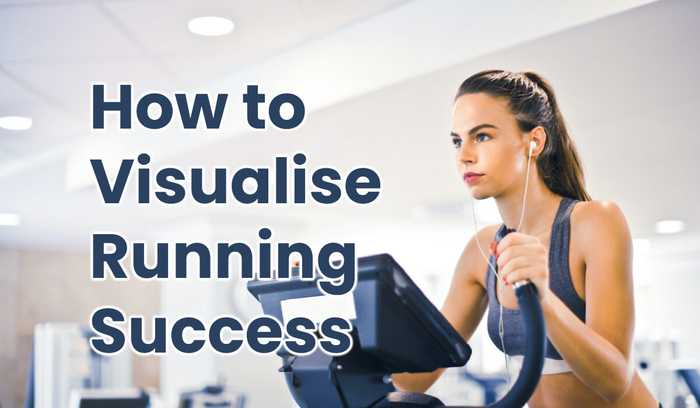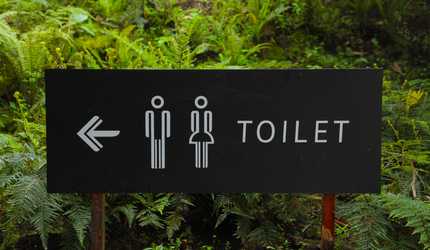How to Visualise Running Success

Mental training or the more modern terms of ‘visualisation’ and ‘imagery’ have been used by legendary athletes for decades.
From Billie Jean King to Michael Jordan: visualising success has helped to deliver iconic game changing performances. Defined as the experience of an athlete imagining themselves performing certain skills.
“I imagined bombs and machine guns raining on me if I didn’t go my fastest.” – Sir Roger Bannister
In 1954 Sir Roger was the first long-distance runner to break the sub 4-minute mile ceiling. His method was to use something visually fearful to spur him on.
Like marathon racing styles, what feels right for you might not for someone else. What we know is whether you’re running your first 5k or first marathon race, visualisation is a tool you can use to help achieve running success.
How do you know if visualisation is for you? Do you ever…
- Experiencing self-doubt.
- Believe you are mentally weak.
- Have a fear that you’ll go out too quickly and won’t be able to finish the marathon.
- Have an interest in knowing how to build mental toughness for running
What Is Running Visualisation?
Athletes of all standards can conjure up images of succeeding in a future scenario, watching it play out as realistically as possible. Practicing this type of visualisation can help you perform at a higher level.
Pro athletes regularly use this method to prepare for big races and events. In your case it could be running a marathon distance for the first time.
It’s worth pointing out that running visualisation isn’t like ‘The Secret’ where you request an outcome in your mind and the universe delivers. That lacks any real effort on your part.
Visualisation combines mental and physical energy. The mental drive should motivate you to become resourceful and action orientated in working more intensely to achieve your goal. Using this type of tool alongside SMART goals can be massively beneficial.
The mind is prepared for running a race or competing in a new event. It is a mental guide to working through the potential challenges that could arise and how you can overcome these on the road to success. In tandem it also helps you set realistic expectations; avoiding the pitiful of setting yourself up mentally for failure.
Benefits of Running Visualisation
Visualisation has many benefits for runners. It can reduce performance anxiety and stress; it can boost focus and overall confidence. The first gain of using running visualisation is it helps you set those SMART running goals.
This can take a linear approach from start to finish or working backwards from the finish to start. Visualising a great running performance is a powerful tool to map out a roadmap to success in your mind.
On race day it’s time for your mind to replay those images of you moving through the showreel towards success. Here the power of your mind becomes the guide to your body delivering physical productivity.
You need mental energy as much as physical energy – both are interconnected – to visualise ourselves on the path to success.
How to Visualise Running Success
If you haven’t run a marathon it might be hard to realistically visualise this type of success. A lack of experience can be bolstered by the running community you have around you.
Fellow runners that have completed marathons are the next best sources of information and experience.
Before you start with your visualisation exercises there’s a great metaphor to consider when adding a sense of realism to the process.
Think of a dirt (sh*t?) sandwich. Metaphorically the experience starts and finishes positive with a good old challenge in the middle – essentially you’re turning the hard rubbish bit into a triumph.
Before you start the process, set aside 15 quiet uninterrupted minutes a couple of times a week.
Here’s the 5-steps to visualise you running a good marathon.
- Lie down in a quiet place and take a deep breath. Inhale on the count of 5 – hold your breath for 5 – exhale for 7. This type of deep breathing exercise will release tension and lighten your muscles and limbs.
- Picture yourself preparing for a run or your next race – it could be the marathon. Begin to use all of your five senses – sight, sound, taste, smell and touch – to immerse yourself in the experience of this event. What do you see? What do you hear? What do you smell? What do you taste?
- Visualise your run. Using all of the five senses, begin to picture your run in as many details as possible. These won’t all be positive; some will challenge you. And play through these images to show how you can successfully overcome and achieve. Some of those finer details might look like these:
- Waking up on race day full of nervous excitement.
- Eating that all important pre-race meal. The belly might be full of butterflies.
- Using the toilet to relieve yourself before the race. That lighter feeling on your body – ready to go!
- Arriving early and on time for the race.
- Warming up, and getting the body’s muscles ready for what it will need to do.
- Standing on the start line and starting the race. Feeling elation and happiness of getting to this point – you’ve come so far with all that training!
- Pick 5 parts of the course where you glide by with confidence, noticing a friend or family member cheering you on from the verge.
- Within these moments of positivity you will encounter a difficulty that tests you mentally and physically. Work through it, telling yourself you can do it – add in a mantra of “I can do […].” This will build your self-efficacy of conquering a marathon.
- Pan the camera of you taking the final bend of the course running onto the straight and over that finish line. Look at your face and those around you. There is pure joy and jubilation!
- Picture embracing your loved ones after you’ve received the race medal.
- Finish with the walk back to that comfy place of rest and relaxation where you can sit in the glory of achievement.
- Visualise finishing the run strong and powerful. This part of the visualisation process needs to be full of confidence and positivity. The culmination of all the training and hard work. A juggernaut of mental and physical energy propelling you over a finish line. You are unstoppable. The crowd revels in this. You gave it your all and you achieved what you set out to do.
- Bring the mind back. Count backwards from 10, taking deep breaths. Gradually become more aware of your surroundings with each breath. Opening your eyes on the count of 1.
To get the full effects of the visualisation process you need to practice this several times a week. Like with any habit or skill, the more you do it the closer you are to mastering the mechanics of it. And when the all important race day comes, you’re ready to put your mind into action to execute your intentions, even under the most difficult circumstances.
Using visualisation as a tool in your race preparation repertoire will help you conquer your biggest race challenges, as well as enable you to enjoy the experience more.


